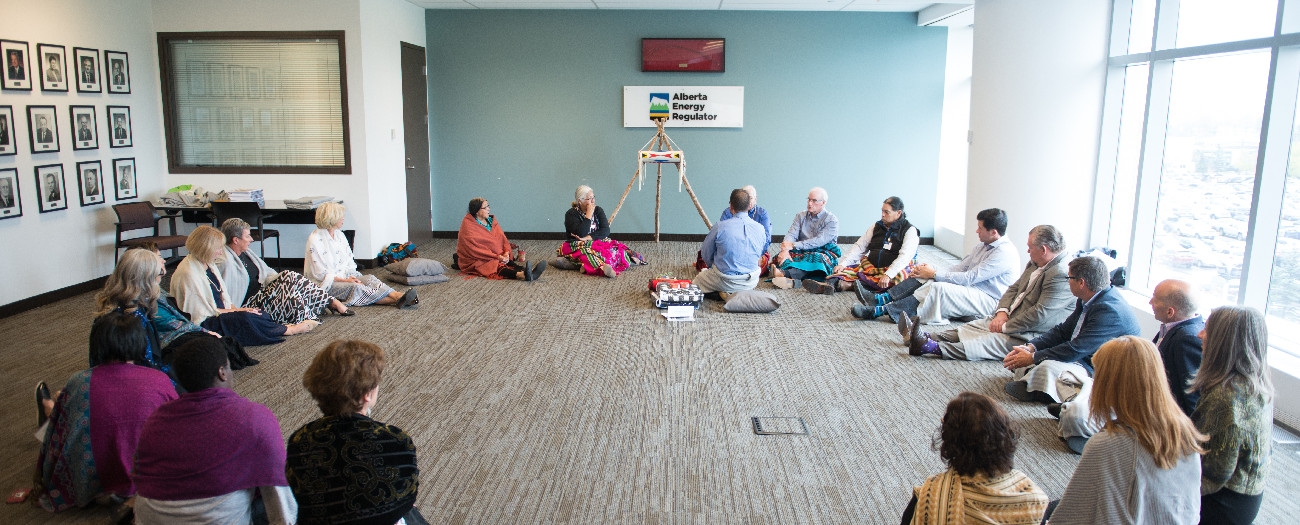AER book discusses parallels between western and indigenous decision-making models
Alberta - September 25, 2017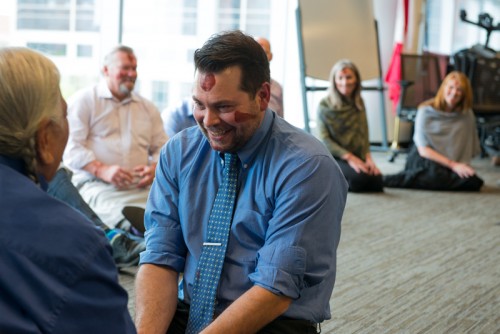
All of our voices matter. Whether we speak in unison or one at a time, in one language or another, in harmony or in discord, we all have the right to be heard.
We know indigenous peoples want their voices reflected in our decisions. However, many of our processes fail to link western and indigenous worldviews, and we need to overcome this to work together and find solutions that are mindful of our cultural differences.
We made it our mission to build a new type of working relationship—one based on trust and mutual understanding—and challenged ourselves to look beyond what we know.
“I don’t think it’s any coincidence that it’s called Voices of Understanding,” says Jason Veness, senior advisor, indigenous engagement, “The real opportunity I think we’re starting to see is how we can include the voices of indigenous people in the work that we do.”
Blackfoot elders Dr. Reg Crow Shoe and Rose Crow Shoe were our guides on this journey. Over a series of months, they worked with AER employees to explore how indigenous processes and worldviews can complement our own. That knowledge is now publicly available in Voices of Understanding: Looking Through The Window, a guide intended to help AER staff and indigenous communities draw parallels between western and indigenous decision-making.
There are a few things you should know about Voices of Understanding.
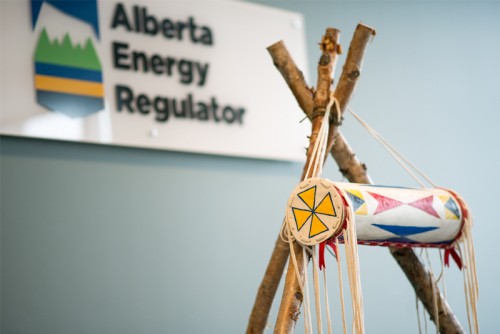
It’s About the Bundle
A bundle is a physical and symbolic representation of an idea or object with significance. Following the AER’s sessions with the Crow Shoes, a bundle was created containing the knowledge and process behind Voices of Understanding. The keeper of this bundle has the right to carry out decisions made in circle processes.
In an intimate circle ceremony, hosted in the AER’s Govier Hall on January 31, Dr. Crow Shoe transferred the rights to the bundle from himself to AER president and CEO Jim Ellis—an honour and responsibility he readily accepted.
On September 21, we presented the completed version Voices of Understanding to Dr. Crow Shoe. But, even with many lessons from this experience printed and bound and the bundle in Ellis’ care, our journey is far from over. This is but one piece in the foundation as we improve our working relationships with indigenous people.
In A Circle, All Voices Are Equal
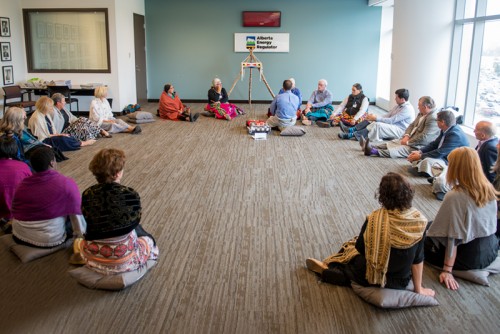
Although sometimes the language used is different, some of the processes the Crow Shoes taught us about have parallels in our work already. Circle management processes are mirrored in hearings, alternative dispute resolution (ADR), and mediation processes we have in place today at the AER.
Circle decision-making begins with an opening statement from the ceremonialist, who brings together people from the involved parties. Before discussions begin, participants cleanse their minds, bodies, and spirits in a smudge ceremony. In the AER’s business, this is not unlike how a meeting begins: with introductions to set the tone.
Next, each circle participant discusses the issues at hand. A second round of discussions seeks solutions. Understanding is built as participants gather in a circle and take turns speaking, facilitating a safe environment for people to share their knowledge and experiences. Each voice is equal. The circle process doesn’t end until a consensus or a decision is reached—not unlike the intent of our ADR or mediation processes.
Don’t Leap Through The Window
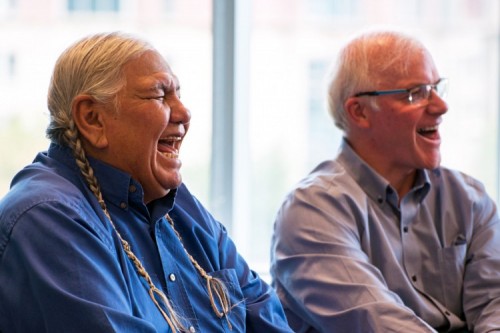
The book’s title comes from the idea that two groups are divided by a wall. Rather than allowing themselves to be completely separated, both groups have equal opportunity to look through a window and better understand the other. This gives them a better understanding of one another’s customs and worldviews, and will better prepare them when they finally step through the door and come together in a shared space.
This space—a space where all voices are equal, and the parties involved recognize and understand their differences—is called an ethical space. Ethical spaces allow groups to come to decisions that are respectful of their cultural differences.
As part of our practice in both written and oral storytelling, Voices of Understanding is also available for download as an audio file (MP3). The full document in both written and audio form can be found on our website.
Natalie Brodych, Writer
Luke Spencer, Digital Media


